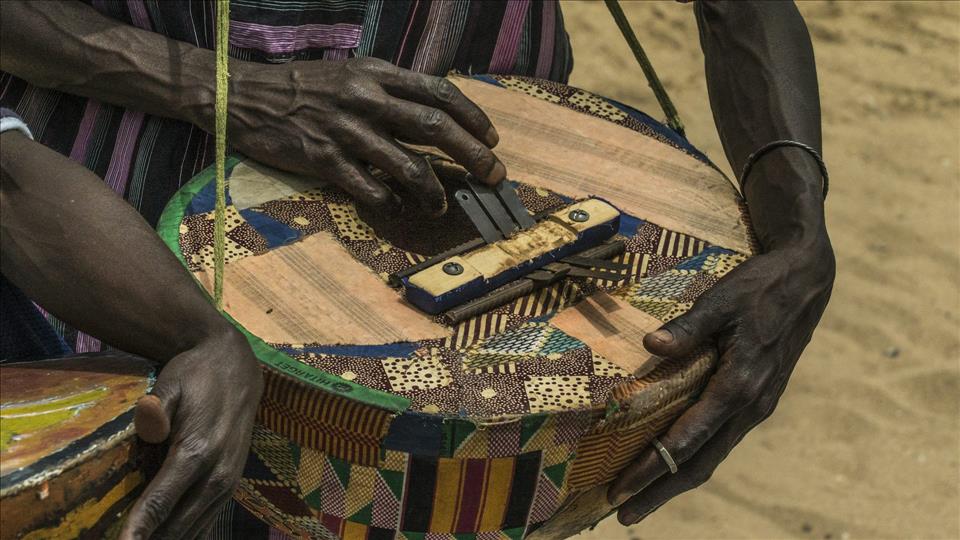
Senegal Has A Rich History Of Traditional Music How It Lives On In Modern Music
As a cultural researcher, I set out to explore the social and cultural significance of both traditional and modern music in Senegal.
I was able to interview 20 musicians, a mix of traditional and modern, who live and perform in the capital city of Dakar as well as other smaller cities and villages.
I define modern Senegalese music as using modern, more western instruments such as the electric and bass guitar, keyboard and drum set. Traditional Senegalese music uses instruments such as the xalam (a guitar-like instrument with three strings), kora (21-string instrument played somewhat like a harp), balafon (similar to a xylophone), djembe and sabar drums (played with hands and sticks).
I found that in Senegal, a country steeped in Islamic religion and tradition, there was a great push for traditional music to be preserved so that cultural values and tradition would be passed on to the next generations. In combining elements of traditional and modern music into a style known as tradi-modern music, musicians have created what they call mbalax rhythms , which are unique to Senegalese music. As a result, traditional music is not lost.
Different messages in modern and traditional musicModern songs in Senegal tend to contain messages about love and relationships. For many listeners, especially the younger generation, this is not a problem. But some musicians can be critical of modern trends. As one of my research participants told me:
More traditional music in Senegal contains messages reminding people to appreciate and respect the cultural values that have played a role in shaping them as individuals. Values like honesty, hard work and dignity are just a few of them. One musician stated it this way:
Messages in traditional music have also been viewed as more profound than those of modern or popular music, since they are embedded in culture and have been passed down from generation to generation.
Why preserve traditional music?Through asking many questions and engaging in discussion, I discovered that the overall sentiment among musicians was in favour of keeping traditional music alive. One mentioned the potential consequences of losing it:
Another musician explained:
Traditional music not only incorporates instruments that were used to make music long ago, and still are used, it contains messages that instruct the present and future generations in the ways people ought to conduct themselves. Preserving the music passes on the message. As one musician put it:
How traditional music is preservedMusicians in Senegal have combined both modern and traditional elements of music (instruments as well as lyrical content) into a third type of music called tradi-modern.
One style of tradi-modern music, mbalax, uses traditional instruments like the sabar drums and their associated rhythms and the kora alongside modern instruments like the electric guitar and keyboards to create a mélange of sounds that attract both older and younger listeners. Youssou N'Dour , one of the most popular singers in Senegal, is also considered to be the pioneer of mbalax music. So music can evolve and adapt to include all generations of people.
One musician said:
Why this mattersTraditional music is the foundation upon which modern music is made and performed. Some musicians believe that making modern music requires an understanding and appreciation of traditional music. One musician said:
One modern musician incorporates a traditional whistle sound:
Considering well-known popular musicians such as Baaba Maal , Wally Seck and Youssou N'Dour, it can seem as if modern music has cast a large shadow over traditional and lesser-known Senegalese musicians.
But the values of traditional music (found in both instrumentation and message of songs) allow these popular musicians to continue making modern (and tradi-modern) music for the masses. And as traditional, modern and tradi-modern (mbalax) music continues to draw in listeners of all ages, it will allow everyone to enjoy music for generations to come.

Legal Disclaimer:
MENAFN provides the
information “as is” without warranty of any kind. We do not accept
any responsibility or liability for the accuracy, content, images,
videos, licenses, completeness, legality, or reliability of the information
contained in this article. If you have any complaints or copyright
issues related to this article, kindly contact the provider above.


















Comments
No comment